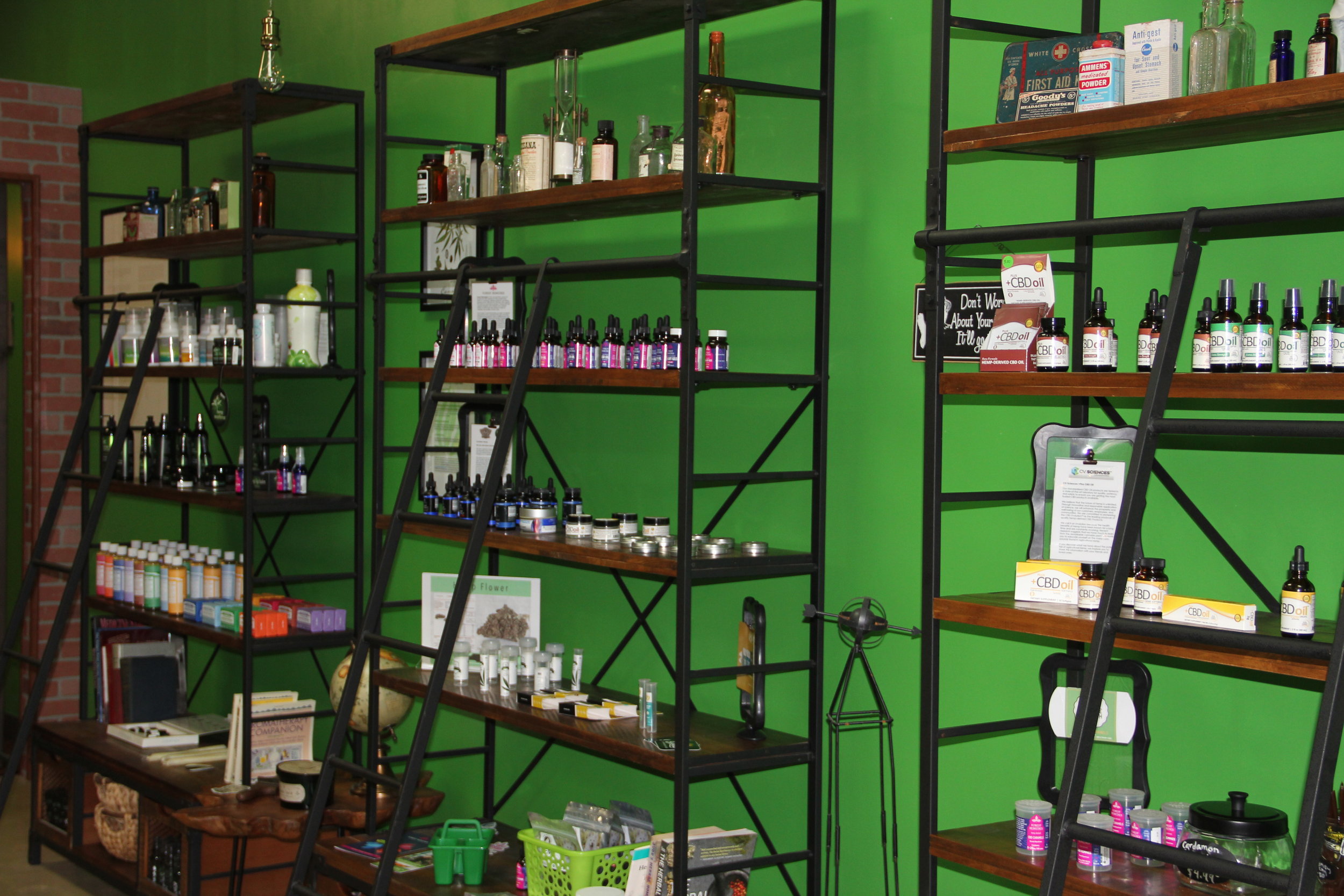CBD. We have CBD. WE HAVE CBD!
Have you noticed signs like these as you drive around town? At the health food store, at that sort of seedy looking Vape store, at the new place that just opened up down the street, even at the gas station? Overnight, it seems CBD appeared on the shelves of every business in the state, and everyone wants you to know that they have it.
But what, exactly, is CBD? You think maybe you’ve heard that it’ll get you high, or maybe that it’s a miracle drug that will cure all of your ailments (it’s neither). Or maybe you really have no idea and were too embarrassed to ask.
Luckily, in three fun-filled articles covered the science, the law, and the business of CBD, you can call yourself a CBD expert. Or, at the very least, have an educated conversation with your friends.
Before getting into the scientific explanation of what CBD is, I need to preface this with a reminder that I am not, in any way, a medical professional. I have no scientific training beyond high school chemistry. Any errors I’ve made are entirely unintentional and a result of my own lack of scientific understanding. If I have made any in my explanation, I welcome any corrections.
Now back to your regularly scheduled Beacon article.
Let’s first start with what CBD is short for, which is cannabidiol. Cannabidiol is just one of many of a type of molecule called cannabinoids. These cannabinoid molecules are produced exclusively by plants in the cannabis family.
All cannabis plants produce cannabinoids. The two most famous cannabis plants are marijuana and hemp, but there are about 170 species total, including hops, hackberries, and some small species of evergreen trees.
Different cannabis plants make different cannabinoids. You've probably heard of THC, a cannabinoid exclusive to the marijuana plant that is attributed to giving marijuana its high. Cannabidiol (AKA CBD) is another type of cannabinoid molecule that both marijuana and hemp create. While it doesn't get you high like THC does, CBD may have other positive health benefits.
“The endocannabinoid system, may be influential in controlling our sleep, mood, fertility, appetite, memory and other bodily functions necessary to help keep the body in homeostasis, or equilibrium. ”
We even have an entire system in our bodies dedicated to these cannabinoid molecules, and it's active inside of you regardless of whether or not you partake in any type of cannabis or cannabis compound. This system, called the endocannabinoid system, may be influential in controlling our sleep, mood, fertility, appetite, memory and other bodily functions necessary to help keep the body in homeostasis, or equilibrium. If something interferes with your body’s ability to maintain its homeostasis, like an injury or a fever, that’s when your endocannabinoid system begins to put things back into order.
Scientists have identified three main components to our endocannabinoid system: endogenous cannabinoids, receptors, and enzymes.
The endogenous cannabinoids, or endocannabinoids, are actually molecules made by our bodies similar to the cannabinoid molecules produced by cannabis plants. These endogenous cannabinoids bind themselves to receptors throughout your nervous system and provide a signal that it's time for your body to respond in some way. There are two known receptors that accept cannabinoid molecules, CB1 in the central nervous system and CB2 in the peripheral nervous system. The receptor the cannabinoids bind to helps determine your bodies response. Once the body has done what it needs to, enzymes break down remaining endogenous cannabinoids.
THC enters your body en masse and works by binding itself to the endocannabinoid receptors, but can’t be broken down by the enzymes, so it sticks around in your brain a lot longer than your endogenous cannabinoids. It’s not 100% clear how CBD interacts with our endocannabinoid system, but it doesn’t bind with our receptors. Instead, it might prevent the enzymes from breaking down our naturally occurring endogenous cannabinoids, allowing them to have a greater impact.
There are currently about 150 clinical trials worldwide testing CBD as a treatment for a wide variety of health conditions.
Photo by Cyma Shapiro
Since the body being out of homeostasis covers a wide range of illnesses and ailments, CBD may be able to help in the treatment of an assortment of problems by increasing our own endogenous cannabinoids. A LiveScience article from this past June stated that there are currently about 150 clinical trials worldwide testing CBD as a treatment for “a wide variety of health conditions, including autism, alcoholism, skin conditions, and schizophrenia”. It also may help with anxiety, migraines, chronic pain, inflammation, epilepsy, and many other conditions.
But, if CBD is so great, where has it been all your life? Why are you just now learning about it and your endocannabinoid system? Why is a self-proclaimed non-scientist writer for the Beacon the one to explain it to you?
I will have all (at least most) of those answers and more for you in the next article in this CBD series.


